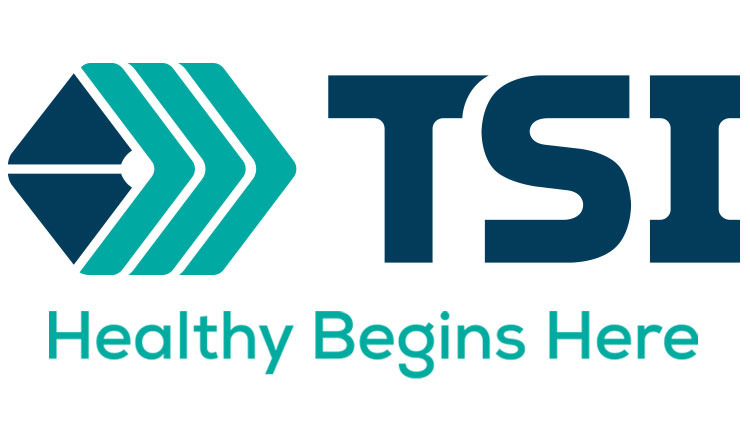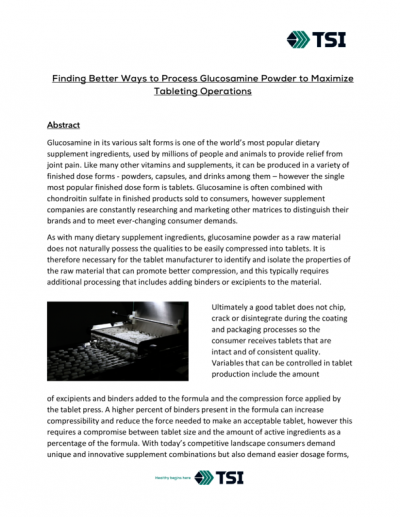Promotional Features
GlucosaGreen solves sustainability and vegan suitability for conventional joint-health ingredient
As the global consumer becomes more health-conscious and eco-proactive, the need for effective plant-based alternatives to conventional animal-based supplements has never been more widespread.
Supplements suitable for everyone are those that are vegan. People who consume animal-based products often have no “beef” with plant-based alternatives and are more willing to try them (“flexitarians.”). Veganism, however, is growing: According to veganbits.com, respondents in a survey noted the top reason for being vegan was for health (69%).
Taste, quality and disparity of plant-based foods have bloomed during the past several years. This sector has grown so rapidly that there is now a conference devoted to all consumables plant-based: the inaugural Plant-Based World Conference & Expo, held this June in New York City.
It is therefore reasonable that the global consumer base is ready for novel, clean plant-based alternatives to conventional dietary supplements typically derived from animal sources. For example, the multiple benefits of glucosamine, typically processed from shellfish, can now be obtained from corn.
Currently, nearly all the world’s glucosamine is produced from shellfish. The process of manufacturing glucosamine from shellfish, however, is one that is heavily reliant on chemicals and energy, and also creates excessive amounts of toxic wastewater that is harmful to people, animals and the environment.
The Conventional Glucosamine Processes
The process of obtaining glucosamine from shellfish is a rather arduous one. To obtain chitin (the raw material) from the shellfish, the process begins with alkali leaching, then alkali cooking, acid leaching, oxidizing, deoxidizing and drying. To make one metric ton (MT) of glucosamine HCL requires 2,000 kilograms (kg) of chitin, along with 5,000 kg of NaOH and 17,000 kg of 30% HCl. NaOH is sodium hydroxide, (also known as lye), used to make such products as commercial drain and oven cleaners, paper and aluminum; it is considered a hazardous substance in some states in the USA.
Producing 1 MT of traditional shellfish glucosamine requires 30 to 40 MTs of shellfish shells and creates 5 to 6 MTs of solid waste. Further, the process is responsible for creating up to 460 MT of wastewater with an unhealthy pH of 5.5.
More than 90 per cent of the globe’s glucosamine is produced by China. The nation has paid a high price for being number one: the excessive amount of wastewater generated, lack of treatment capability and capacity, and high costs to treat such vast amounts of waste, has caused significant damage to the surrounding areas of shellfish glucosamine processing plants with polluted water, acid fog, and even corrosion of nearby buildings. This has led the Chinese government to enforce stricter environmental protection policies. Factories have had to shut down due to not having proper treatment facilities – hundreds of small and medium-size shellfish-glucosamine factories have shut down since 2016.
While this new focus on the environment is a positive step towards a more sustainable global future, it has left many industries facing heavy price increases and uncertain, fragmented and unreliable supply chains.
Another inventive method of creating supplemental glucosamine is by using citric biomass from Aspergillus niger, a fungus whose shell is also abundant in chitin. The fungus-derived chitin has been the traditional alternative source of glucosamine for those individuals with shellfish allergies or who are strict vegans. Yet this process, too, is not a healthy one for the environment: it produces 215 MT of wastewater and 25 MT solid waste.
Could there be a sustainable, easily grown commodity plant that can yield material for glucosamine? Yes. It’s corn.
GlucosaGreen: Truly A-maize-ing
TSI has created a patent-protected process that uses a unique fermentation technology on non-GMO corn to produce glucosamine bioequivalent to shellfish glucosamine. And this process is much more suitable to the well-being of the environment. GlucosaGreen® is the world’s first commercially available glucosamine produced from corn.
GlucosaGreen’s starting material is glucose itself derived from non-GMO corn. From here, the fermentation process uses a patented micro-organism as a processing aid. The technology efficiently transforms glucose into glucosamine.
GlucosaGreen® produces only 2% of the waste compared to shellfish glucosamine. It takes only 2 MTs of clean water to produce the same amount of glucosamine – 99.9 per cent less water than required for shellfish-derived glucosamine.
GlucosaGreen has been validated to be bioequivalent to all other forms of approved glucosamine, thus it has the same favourable safety and tolerability profile as other dietary glucosamine.
This glucosamine also has several more attributes that today’s discerning consumers will find favourable. It is a non-GMO-certified product, GRAS affirmed, is allergen- and shellfish-free, and no animal products are used in the entire fermentation and manufacturing processes. GlucosaGreen is a clean-label-friendly glucosamine. It made sustainably and is therefore not dependent on a fragmented supply of crustacean shells or a limited quantity of citric acid biomass waste stream.
Consumers are proactively demanding and using environmentally sustainable and friendly products. As more consumers become aware of how the conventional shellfish glucosamine industry impacts the environment – and the shellfish populations themselves – they will embrace GlucosaGreen as their glucosamine of choice.
GlucosaGreen is available for manufacture in a variety of forms: glucosamine sulfate, glucosamine hydrochloride, and N-acetyl-d glucosamine as well as in several formats including powders with a variety of particle sizes and exclusive DC granules used to make premium tablets via direct compression.
With GlucosaGreen being derived from a readily available vegetable source, and manufactured via environmentally friendly methods, consumers and brand partners can be reassured of a stable, high-quality supply of glucosamine. GlucosaGreen will help partner brands distinguish their products in a crowded joint health market – and align with consumer preference.





